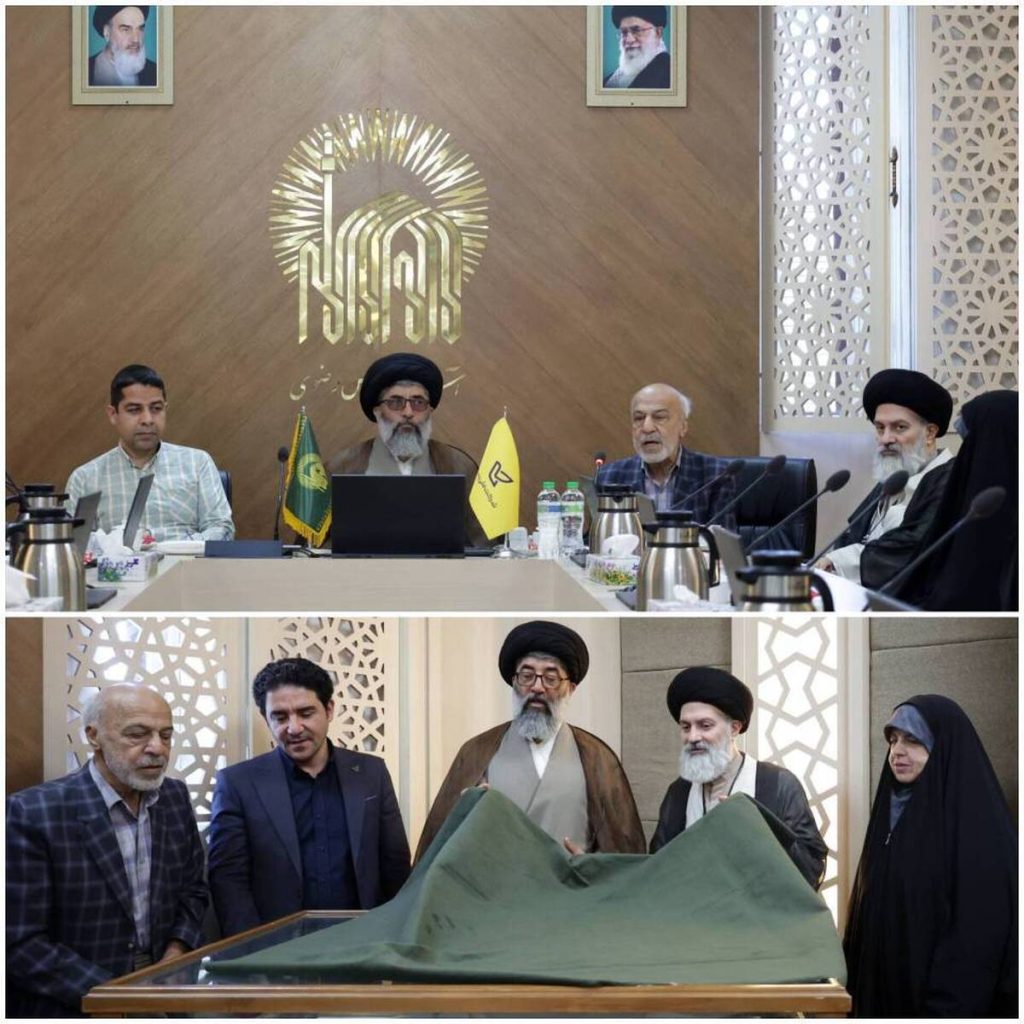Unveiling of Iran’s Oldest Post and Telegraph Magazine at the Razavi Library

On the occasion of World Post Day, Iran’s oldest Post and Telegraph magazine housed in the Razavi Collection was unveiled at the Central Library of the Holy Shrine of Imam Reza.
The ceremony was attended by Hojatoleslam wal-Muslimeen Seyed Jalal Hosseini, Head of the Organization of Libraries, Museums, and the Document Center of Astan Quds Razavi; Hossein Sharifi, General Manager of Khorasan Razavi Provincial Post Company; Abolfazl Kamalizadeh, researcher, publisher, and owner of the monthly stamp magazine “Tambre”; along with several members of the family of the martyr Ayatollah Seyed Mohammad Hosseini Beheshti, the former and martyred head of the judiciary. The event took place in the Razavi Think Tank Hall of the Central Library at the Holy Shrine.
The General Manager of Khorasan Razavi Provincial Post Company stated during the event: “The post has always played a significant role in the cultural development of human societies from the past to the present. In this context, stamps can be viewed as cultural ambassadors of each society.”
He added: “Since ancient times, perhaps as far back as 2,500 years ago, the post was born in Iran in some form. Of course, initially, the post solely carried messages from one government point to another. Over time, it expanded and became accessible to the public.”
“The post in Iran took on an administrative form during the era of Amir Kabir and was eventually approved as the Iranian Post Company by the Parliament in 1987, continuing its operations and services to this day.”
“Currently, people are more aware than ever of the role of the Post Company in the country’s development across various fields, such as digital economy development, cultural justice, and communication equity. For instance, it is the Post Company that can deliver a book to the most remote parts of the country, such as nomadic communities.”
The publisher and owner of the monthly stamp magazine “Tambre,” another speaker at the event, remarked: “The stamp collection and postal history museum of Astan Quds Razavi is among the richest museums in the country in this field, possessing significant scientific and research capacity.”
This researcher also shared insights on the origins of the word “stamp,” the printing of Iran’s first stamp during the reign of Naser al-Din Shah Qajar, the identity role of stamps in every country, and the first stamps related to the city of Mashhad, such as the stamp featuring the Goharshad Mosque.
Later in the session, Mohibeh Sadat Hosseini Beheshti, the daughter of the martyr Ayatollah Beheshti, said: “Purchasing and collecting stamps was one of our family activities, encouraged by my father. Through viewing these stamps in my childhood, I gained extensive cultural knowledge about my country and its historical monuments. In fact, this was an indirect and cultural education for us.”
Source: Astan News Website. News Code: 700338

